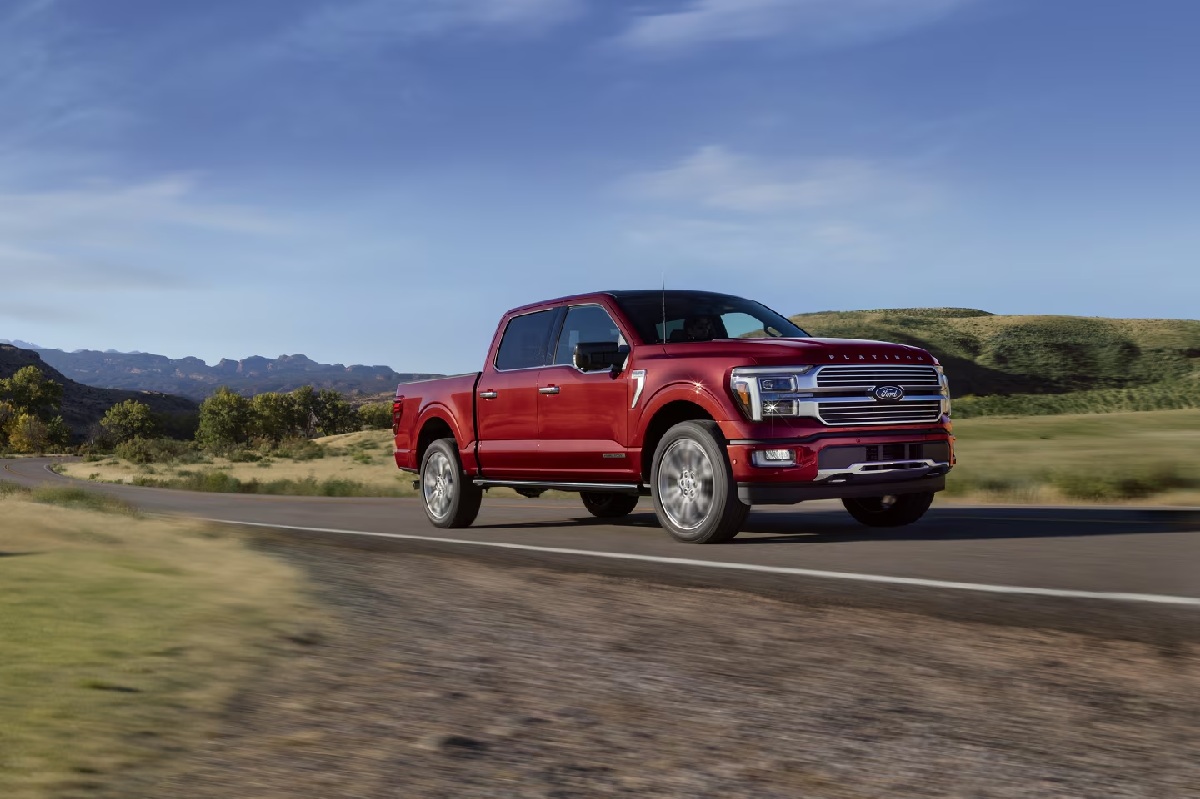The Ford F-150 remains one of the most popular pickup trucks on the market, offering various configurations that impact its weight. Whether you’re considering towing capacity, fuel efficiency, or overall performance, understanding the weight of an F-150 is essential for making an informed decision.

Weight Variations Across Models
The Ford F-150 lineup offers multiple cab styles, bed lengths, and drivetrain options, each contributing to distinct weight specifications. The base XL Regular Cab with a 141-inch wheelbase weighs approximately 1,870 kg, making it one of the lighter options in the lineup. This weight can increase significantly depending on the configuration you choose.
For those requiring more passenger space, the SuperCab and SuperCrew options naturally add more weight. The additional doors, seating, and structural reinforcements contribute to a heavier vehicle overall. SuperCrew models can weigh considerably more than their Regular Cab counterparts, reflecting the added material and features.
How Drivetrain Affects Weight
One of the most significant factors affecting the F-150 weight is the drivetrain choice. The standard rear-wheel drive (RWD) models are generally lighter than their four-wheel drive (4WD) counterparts. When upgrading to a 4WD system, expect an additional weight of approximately 200-300 kg, depending on the specific model and configuration.
The electronically controlled four-wheel-drive Auto mode, available on many models, incorporates sophisticated components that contribute to the overall weight. This system delivers on-demand performance by distributing power as needed, but comes with the trade-off of additional weight.
Engine Options and Their Impact on Weight
The F-150 offers several engine choices, each affecting the truck’s weight differently:
The 2.7L EcoBoost V6 engine is one of the lighter options, contributing to the lower overall weight of models equipped with this powerplant. This engine produces 325 horsepower and 400 lb-ft of torque while keeping the weight manageable.
Moving up to the 3.5L EcoBoost V6 adds more weight but delivers increased power for demanding tasks. The 5.0L V8 option is typically heavier than the EcoBoost alternatives, reflecting the larger displacement and additional components.
For those interested in the PowerBoost hybrid option, the addition of battery packs and electric motors increases the overall weight compared to conventional powertrains. However, this hybrid system offers improved fuel efficiency and can even deliver 7.2 kW of electrical power for tools and equipment.
The heaviest engine option is found in the Raptor R, which features a 5.2L supercharged V8. This high-performance variant significantly increases the truck’s weight due to the larger engine and additional performance components.
Payload and Towing Capacities
Despite variations in weight, the F-150 maintains impressive capabilities. The payload capacity reaches up to 1,109 kg, allowing for substantial cargo transportation. Towing capacities range from 3,357 kg for the base 2.7L EcoBoost to an impressive 6,123 kg for the 4×4 3.5L EcoBoost V6 when equipped with the optional Max Trailer Tow Package.
The weight of the F-150 strikes a balance between capability and efficiency. Even with its substantial weight, the truck delivers a comfortable highway ride and surprisingly responsive handling characteristics.
Dimensions That Contribute to Weight
The dimensions of the F-150 vary based on cab and bed configuration. The Regular Cab with a 141-inch wheelbase measures 5,784 mm in length, 2,029 mm in width, and 1,910 mm in height. These substantial dimensions naturally contribute to the truck’s weight.
With five different wheelbases available depending on cab and box pairings, the weight distribution changes accordingly. The Regular cab accommodates two adults comfortably, while the SuperCab and SuperCrew offer seating for more passengers with varying degrees of space.
5 Facts About the 2025 Ford F-150 Weight
1. The lightest F-150 model weighs about the same as two adult male moose combined.
2. The weight difference between the lightest and heaviest F-150 models is approximately equivalent to carrying 15 additional adult passengers.
3. Despite its substantial weight, the F-150 can still achieve fuel efficiency as low as 9.2 L/100 km on highway driving with certain configurations.
4. The aluminum body introduced in previous generations continues to save approximately 300 kg compared to traditional steel bodies.
5. The heaviest F-150 variant weighs more than some small recreational boats.
Questions and Answers About the 2025 Ford F-150 Weight
What is the weight of the base Ford F-150?
- The base of the regular cab with a 141-inch wheelbase weighs approximately 1,870 kg.
How much does the drivetrain choice affect the weight of an F-150?
- Choosing a 4WD system over the standard RWD adds approximately 200-300 kg to the overall weight.
Which engine option results in the heaviest F-150?
- The 5.2L supercharged V8 found in the Raptor R creates the heaviest variant.
Does the PowerBoost hybrid system add significant weight?
- Yes, the PowerBoost hybrid adds weight due to the battery packs and electric motors, though this is offset by improved fuel efficiency.
How does the F-150 weight affect its fuel economy?
- Heavier configurations generally consume more fuel. For example, the Raptor R, with its higher weight, has a combined fuel consumption of 19.7 L/100 km.
What is the payload capacity relative to the F-150 weight?
- This pickup truck can carry a payload of up to 1,109 kg, which is approximately 50-60% of the vehicle’s base weight, depending on configuration.
How does the SuperCrew cab affect the F-150 weight compared to the Regular Cab?
- The SuperCrew adds significant weight due to additional doors, seating, and structural components needed for passenger safety.
Has the use of aluminum in the F-150 body affected its weight?
- Yes, the aluminum body introduced in previous generations continues to save approximately 300 kg compared to traditional steel bodies.
Does the bed length significantly impact the F-150 weight?
- Yes, longer beds (8-foot vs. 5.5-foot) add to the overall weight due to the additional materials required.
How does the F-150 weight compare to previous generations?
- The latest model maintains similar weight to recent generations, with engineering refinements focused on maintaining strength while optimizing weight where possible.



